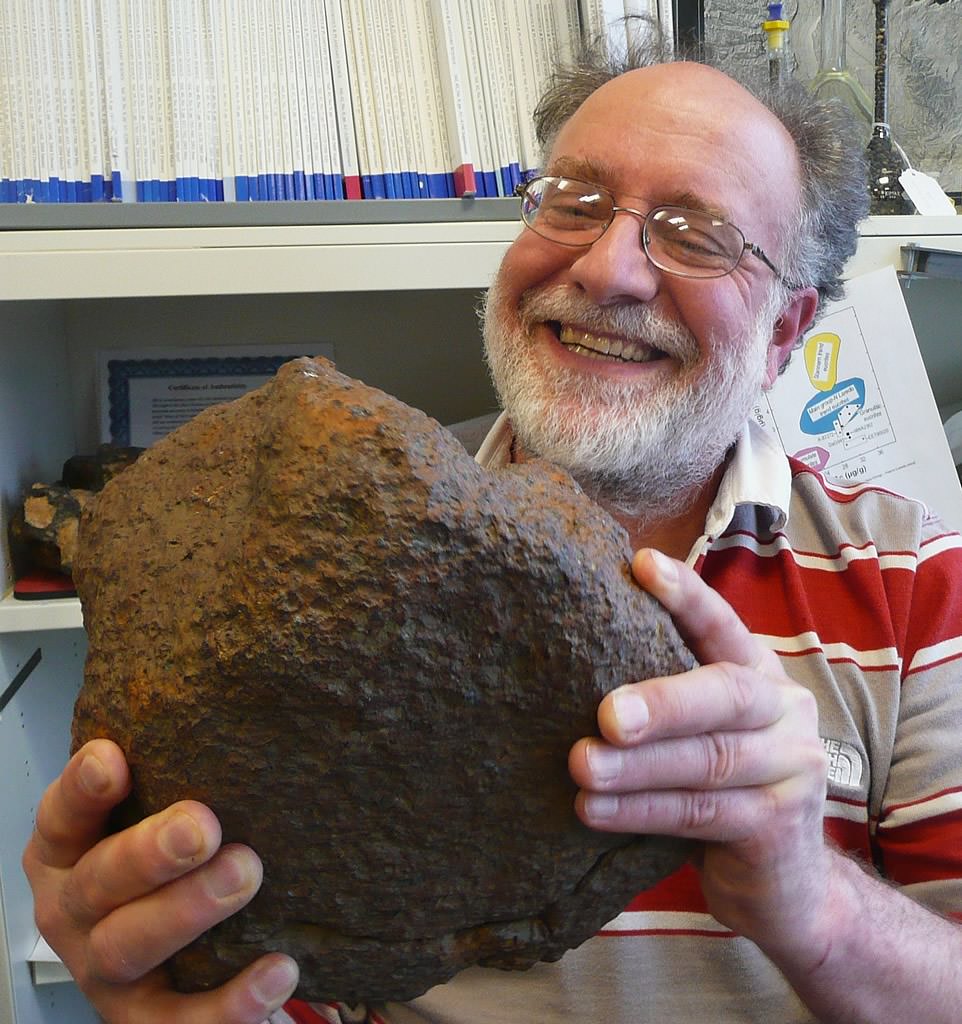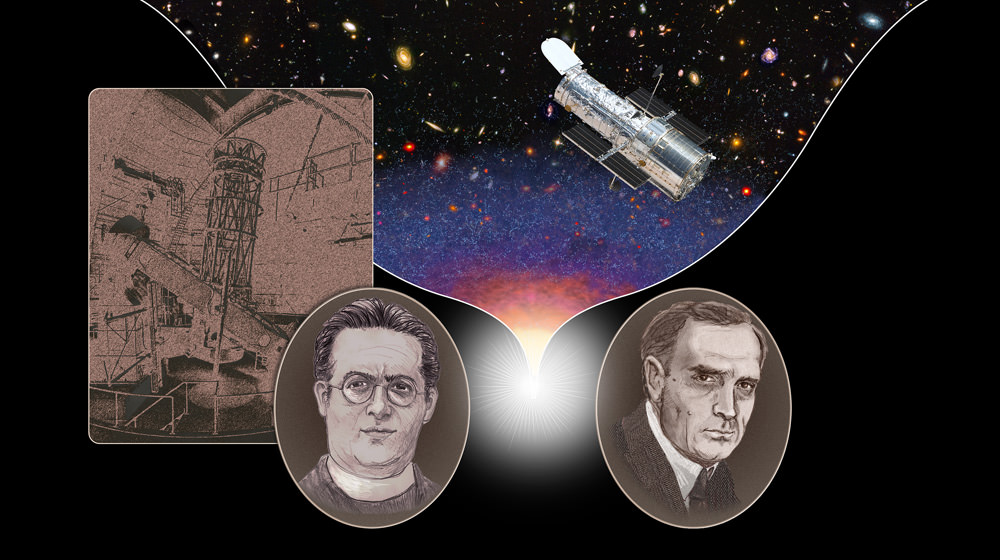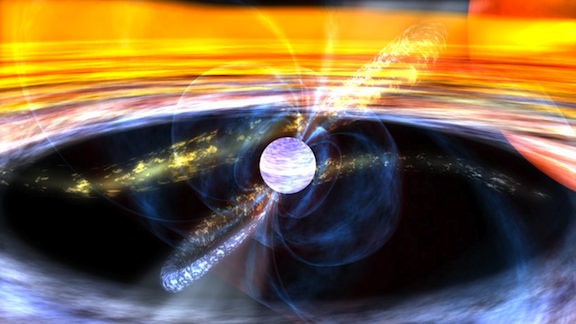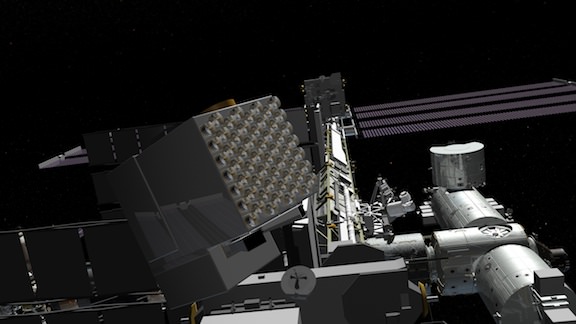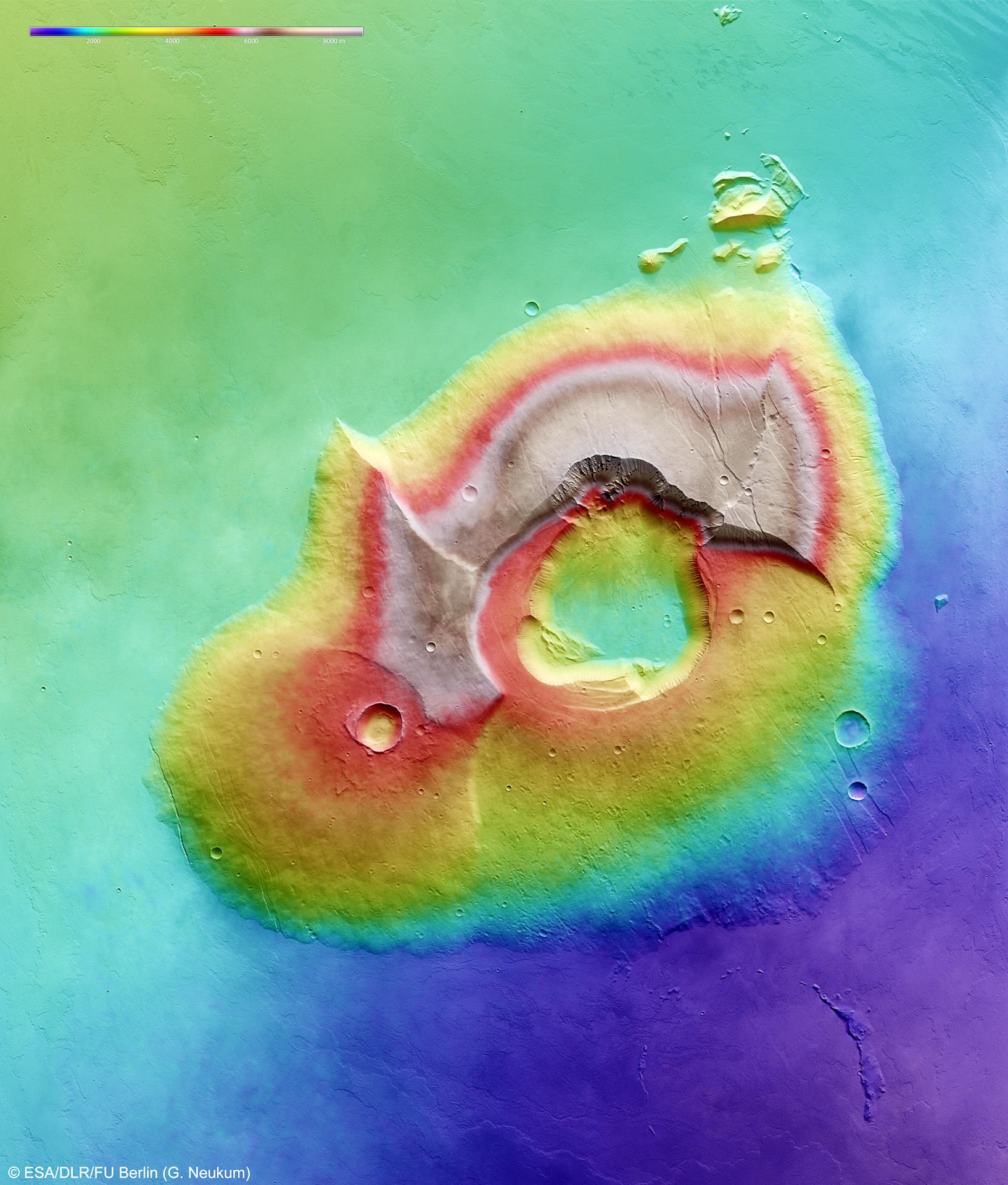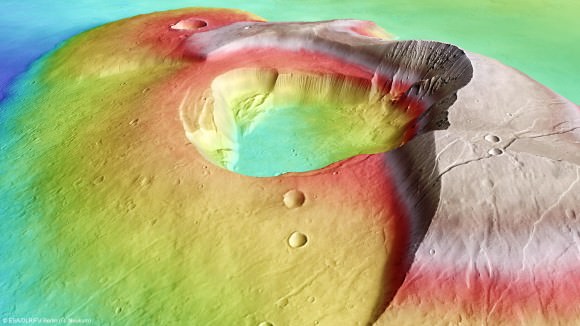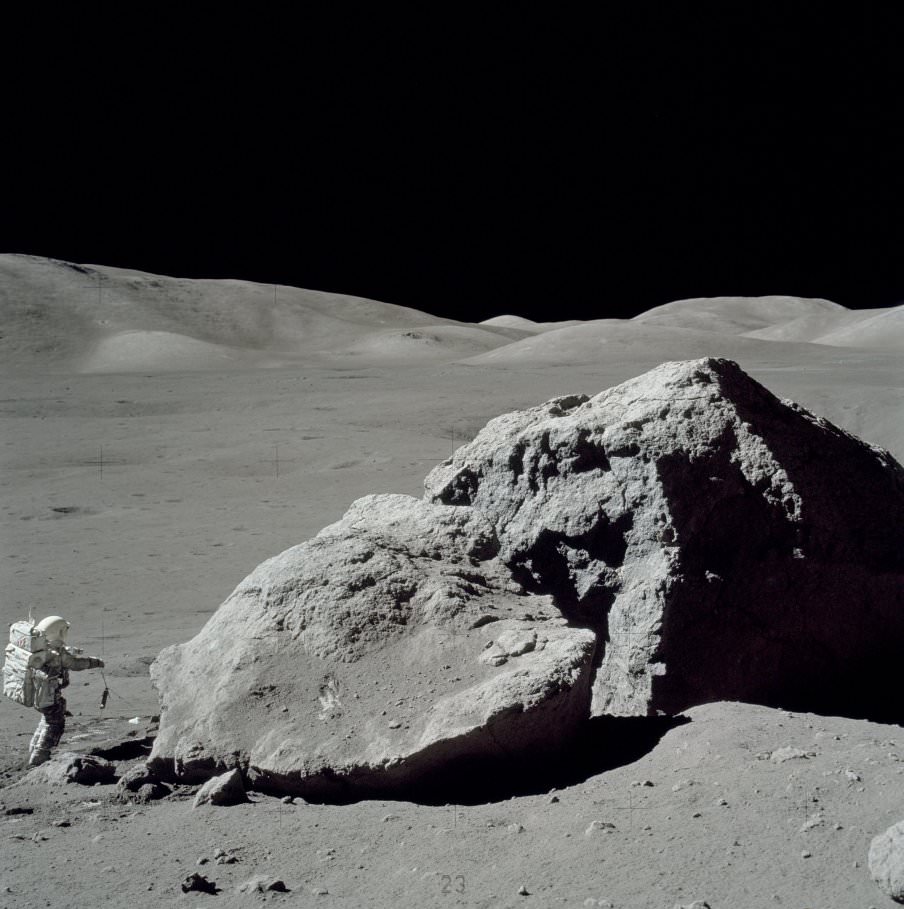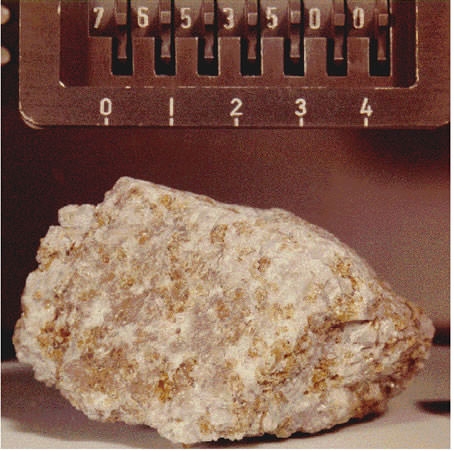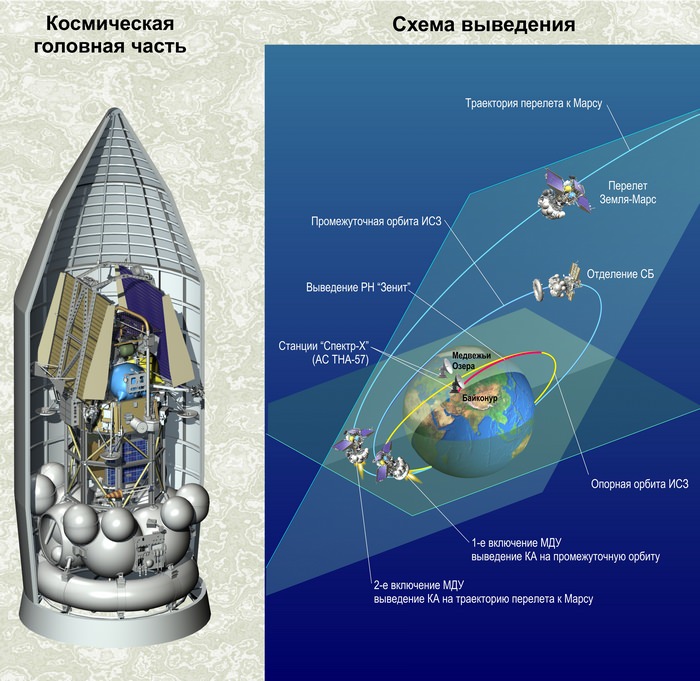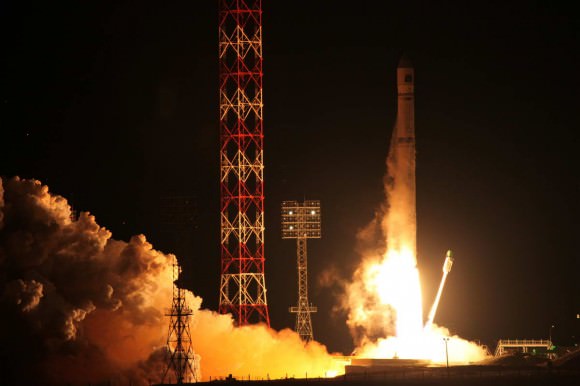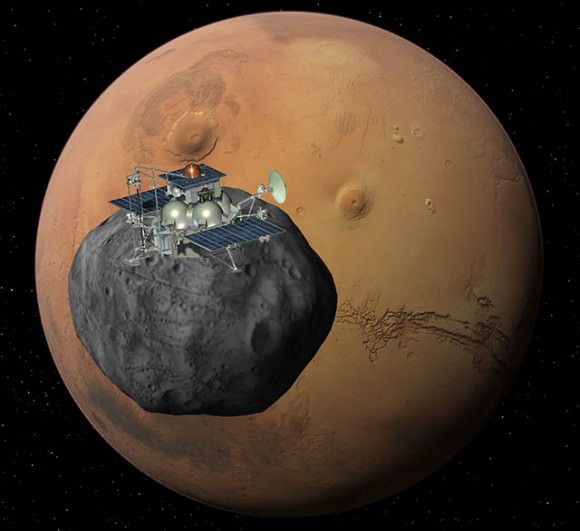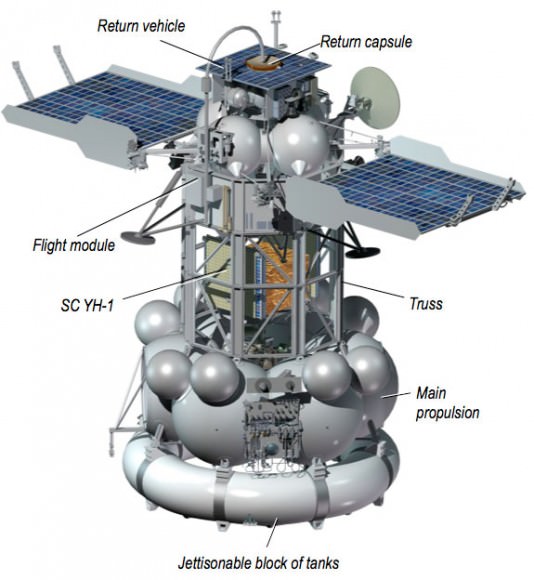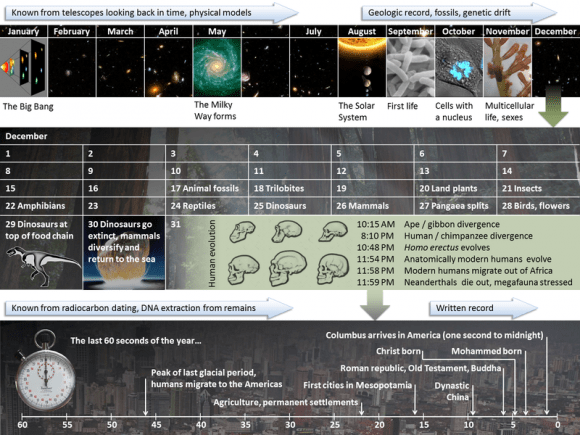[/caption]
Meteorite hunter Karl Aston finds meteorites not by digging in the ground, but by placing ads in local newspapers. He asked people who found unusual rocks to contact him. Most responses were bum leads, but in 2009 Aston heard from a farmer in the northwestern Missouri of Conception Junction, who found something interesting: An unusually heavy stone buried in a hillside. The overall size was similar to that of a basketball and had a mass of 17 kilograms (37 pounds). Its rusty exterior hid its true nature. When the farmer had sawed off one end, olive-green crystals embedded in a shining metal shone forth. It was one of the rarest types of meteorites, a pallasite, of which only 61 samples are currently known. Recently, scientists at Washington University in St. Louis have gotten involved in an attempt to discover the meteorite’s history.
Pallasites and other meteorites are relics of the formation of the solar system. The most commonly accepted story for their formation is that they represent a boundary region inside larger asteroids where the heat from formation melted the iron and nickel metal which sunk to the core. The lighter crystals would float, and near this transition, there would be some mixing which, when broken apart due to later impacts, would form the pallasites. These asteroids formed in the asteroid belt between Mars and Jupiter and similar layers would likely be found in larger asteroids still present as well as in planets like the Earth. An alternative theory is that the materials formed independently and were mixed more recently due to large impacts.

Within the United States, 20 pallasite meteorites have been discovered. The majority of them belong to a single family of “main group” pallasites due to a similar chemical composition of their olivine crystals. When compared to other samples, the Conception Junction meteorite was unique. Because of this, the sample was given a unique designation this past August, named after the location of discovery. Before the Meteoritical Society recognizes a designation, it is required that a museum or other institutional collection houses a “type specimen” which will make the material available for scholarly research. As such a portion of the sample will be housed at UCLA where the chemical analysis on the metal was performed (the olivine was examined at Washington University).
The rarity of pallasite meteorites makes them uncommonly valuable. Some slices of the Conception Junction meteorite are still available for sale or trade, but don’t expect it to be an impulse buy. While more common stony meteorites sell for a few dollars per gram, pallasite meteorites sell for a few hundred dollars per gram. The overall price is also determined by the condition (some are unstable in Earth’s atmosphere) and whether or not it has a unique history. Meteorites for which the fall was observed are especially prized.
Wondering if the discovered meteorite was part of a larger body, Aston and other meteorite collectors including Robert Ward and Dave Gheesling conducted an extensive search of the region. They looked for 16 months in concentric circles centered on the original discovery location, but did not find any other specimens.

